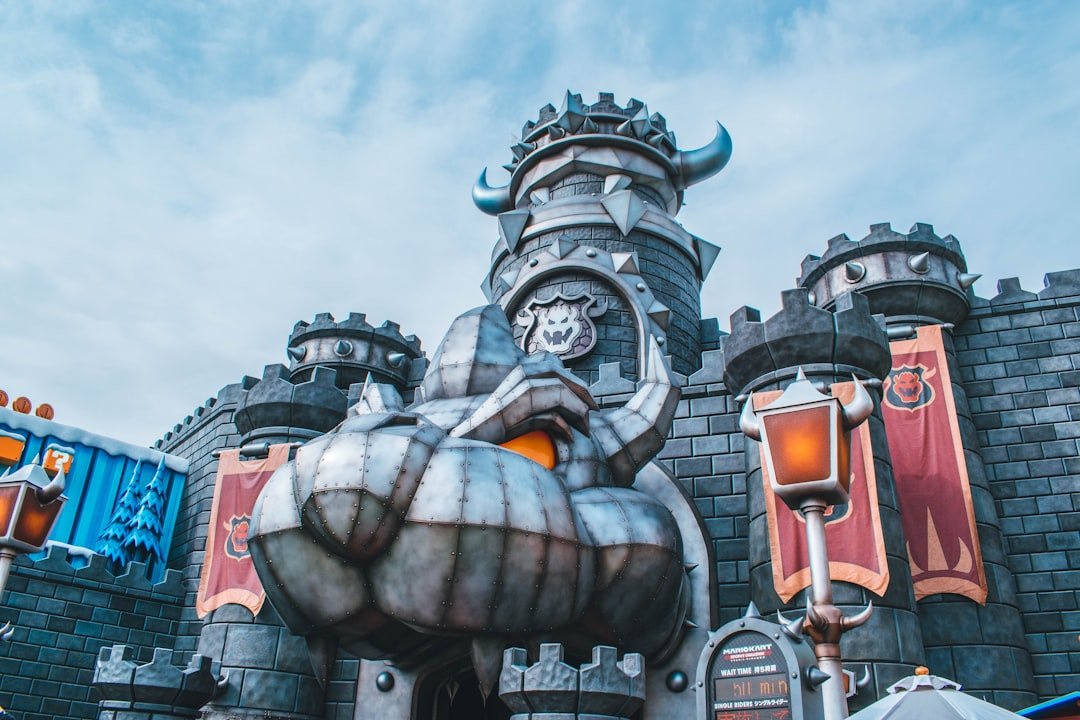Now Reading: Is AAA fatigue real for gamers in 2025?
-
01
Is AAA fatigue real for gamers in 2025?
Is AAA fatigue real for gamers in 2025?

As I reflect on the gaming landscape, it’s impossible to ignore the meteoric rise of AAA games. These titles, often backed by major studios and substantial budgets, have transformed the industry into a powerhouse of entertainment. The term “AAA” signifies not just high production values but also a commitment to delivering immersive experiences that captivate players.
I remember when games like “The Last of Us” and “Grand Theft Auto V” set new standards for storytelling and graphics, drawing in millions of players and generating billions in revenue. This surge in popularity has led to an arms race among developers, each striving to outdo the last in terms of visual fidelity, narrative depth, and gameplay mechanics. The allure of AAA games lies in their ability to create expansive worlds filled with intricate details.
I find myself getting lost in these virtual realms, where every corner holds a new adventure or a hidden secret. The investment in high-quality voice acting, motion capture, and cinematic storytelling has elevated gaming to an art form. As I engage with these titles, I can’t help but appreciate the craftsmanship that goes into creating such rich experiences.
Key Takeaways
- AAA games have seen a significant rise in popularity and production in recent years, with big budgets and high production values.
- AAA games can have a significant impact on gamers, influencing their behavior, emotions, and even mental health.
- Gaming technology has evolved rapidly, with advancements in graphics, virtual reality, and artificial intelligence shaping the gaming experience.
- Microtransactions have become a controversial aspect of AAA games, with some gamers feeling exploited and others enjoying the convenience.
- AAA games can have psychological effects on gamers, including increased aggression, addiction, and escapism.
The Impact of AAA Games on Gamers
The Thrill of Belonging
Personally, I have experienced the thrill of being part of a global community that rallies around these titles. The excitement surrounding a new release often feels like a cultural event, with fans eagerly discussing theories, sharing gameplay tips, and even forming friendships based on shared interests.
The Dark Side of Gaming
However, the impact isn’t solely positive. The pressure to keep up with the latest releases can lead to feelings of anxiety and inadequacy. I’ve noticed that as AAA games become more demanding in terms of time and skill, some gamers may feel overwhelmed. The fear of missing out (FOMO) can drive individuals to invest countless hours into games, sometimes at the expense of other important aspects of life.
A Complex Relationship
This duality—where AAA games can foster community while also contributing to stress—highlights the complex relationship I have with these titles.
The Evolution of Gaming Technology

The evolution of gaming technology has been nothing short of revolutionary. I often marvel at how far we’ve come since the days of 8-bit graphics and simple gameplay mechanics. Today’s AAA games leverage cutting-edge technology, including advanced graphics engines, artificial intelligence, and virtual reality. I remember the first time I played a game that utilized ray tracing; the realism was astonishing, making me feel as though I was truly stepping into another world. This technological advancement has not only enhanced visual fidelity but has also allowed for more complex narratives and gameplay systems.
Moreover, the rise of cloud gaming and cross-platform play has changed how I interact with games. No longer confined to a single console or device, I can seamlessly switch between platforms while maintaining my progress. This flexibility has made gaming more accessible than ever before.
However, with these advancements come challenges, such as the need for constant updates and patches that can disrupt gameplay. As I navigate this ever-evolving landscape, I find myself both excited and cautious about what the future holds for gaming technology.
The Role of Microtransactions in AAA Games
Microtransactions have become a staple in the world of AAA games, often sparking heated debates among gamers. Personally, I have mixed feelings about this trend. On one hand, microtransactions can enhance my gaming experience by providing additional content or cosmetic items that allow for personalization.
I enjoy customizing my characters or unlocking new skins that reflect my style. However, I also recognize that this model can lead to frustration when it feels like essential content is locked behind a paywall. The prevalence of microtransactions has shifted the focus for some developers from creating complete experiences to monetizing every aspect of gameplay.
I’ve encountered situations where it seems that the game is designed to encourage spending rather than rewarding skill or dedication. This shift can create a divide among players, where those willing to spend more money gain advantages over others who prefer to play without additional purchases. As I navigate this landscape, I find myself advocating for transparency and fairness in how microtransactions are implemented.
The Psychological Effects of AAA Games on Gamers
The psychological effects of AAA games are complex and varied. On one hand, I find that engaging with these immersive worlds can serve as a form of escapism, allowing me to temporarily forget about real-life stresses and immerse myself in thrilling narratives. The adrenaline rush from completing challenging missions or defeating formidable bosses can be incredibly rewarding.
However, I also recognize that excessive gaming can lead to negative consequences, such as addiction or social isolation. As I delve deeper into my gaming habits, I’ve become more aware of how certain titles can evoke strong emotional responses. Games with rich storytelling often resonate with me on a personal level, prompting reflection on my own life experiences.
Yet, there are times when the intensity of certain narratives can leave me feeling drained or emotionally affected long after I’ve put down the controller. This duality highlights the need for mindfulness in my gaming habits, ensuring that I engage with these experiences in a healthy way.
The Social and Cultural Impact of AAA Games

The social and cultural impact of AAA games cannot be overstated. As someone who has grown up alongside this medium, I’ve witnessed how gaming has evolved from a niche hobby into a mainstream cultural phenomenon. Major releases often dominate conversations in popular media, influencing everything from fashion trends to film adaptations.
I find it fascinating how characters from games like “Fortnite” or “Overwatch” have become cultural icons, transcending their digital origins to become part of our everyday lives. Moreover, AAA games have fostered diverse communities that celebrate inclusivity and representation. As I engage with various titles, I appreciate seeing characters from different backgrounds and identities represented on screen.
This shift not only enriches the gaming experience but also reflects broader societal changes towards acceptance and diversity. However, there is still work to be done in ensuring that all voices are heard and represented within the industry.
The Relationship Between AAA Games and Mental Health
The relationship between AAA games and mental health is an area that deserves careful consideration. Personally, I’ve found that gaming can serve as both a coping mechanism and a source of stress. On particularly challenging days, immersing myself in a game provides an escape from reality and allows me to unwind.
The sense of achievement from completing quests or leveling up can boost my mood and provide a sense of purpose. However, there are times when excessive gaming can lead to feelings of guilt or anxiety, especially when it interferes with responsibilities or relationships. I’ve learned that balance is key; while gaming can be therapeutic, it’s essential to remain aware of its potential pitfalls.
Engaging in open conversations about mental health within the gaming community is crucial for fostering understanding and support among players.
The Rise of Indie Games as an Alternative to AAA Titles
In recent years, indie games have emerged as a compelling alternative to traditional AAA titles. As someone who enjoys exploring different facets of gaming, I’ve found indie games often offer unique narratives and innovative gameplay mechanics that challenge conventional norms. These smaller studios frequently prioritize creativity over profit margins, resulting in experiences that feel fresh and authentic.
Titles like “Hollow Knight” or “Celeste” have captivated me with their artistry and emotional depth. The rise of indie games also highlights the importance of diversity within the industry. Many indie developers come from varied backgrounds and bring unique perspectives to their work.
This diversity enriches the gaming landscape by introducing stories and themes that may not be explored in mainstream titles. As I delve into these indie experiences, I appreciate the opportunity to support smaller creators while enjoying innovative gameplay that pushes boundaries.
The Future of Gaming and Its Potential Effects on AAA Fatigue
Looking ahead, the future of gaming presents both exciting possibilities and potential challenges related to AAA fatigue. As someone who has invested countless hours into blockbuster titles, I sometimes feel overwhelmed by the sheer volume of releases vying for my attention. The constant push for bigger and better experiences can lead to burnout among gamers who struggle to keep up with trends.
To combat this fatigue, it’s essential for developers to prioritize quality over quantity. As I navigate this evolving landscape, I hope to see a shift towards more meaningful experiences that resonate on a personal level rather than simply aiming for commercial success. By focusing on storytelling and player engagement rather than sheer scale, developers can create lasting connections with their audience.
Strategies for Managing AAA Fatigue
Managing AAA fatigue requires intentionality and self-awareness in my gaming habits. One strategy that has proven effective for me is setting boundaries around playtime. By designating specific hours for gaming rather than allowing it to consume my entire day, I can maintain a healthier balance between my virtual adventures and real-life responsibilities.
Additionally, diversifying my gaming library by incorporating indie titles or exploring different genres helps keep my experience fresh and engaging. Another approach involves being selective about which AAA titles I invest my time in. With so many releases flooding the market, it’s easy to feel pressured to play every new game that comes out.
Instead, I focus on titles that genuinely interest me or those recommended by trusted friends within the community. This selective approach allows me to savor each experience without feeling overwhelmed by an endless backlog.
The Importance of Balance in Gaming Habits
Ultimately, finding balance in my gaming habits is crucial for maintaining a healthy relationship with this beloved pastime. While AAA games offer thrilling experiences filled with adventure and excitement, it’s essential not to lose sight of other aspects of life—such as social connections, physical health, and personal growth. By prioritizing balance, I can enjoy all that gaming has to offer while ensuring it enhances rather than detracts from my overall well-being.
As I continue my journey through the world of gaming, I remain committed to fostering a mindful approach that celebrates both the joys and challenges inherent in this medium. By embracing balance and being intentional about my choices as a gamer, I can navigate the evolving landscape while cherishing the experiences that resonate most deeply with me.
Is AAA fatigue real for gamers in 2025? According to a recent article on Gamers.co, there are plenty of exciting games on the horizon that could potentially alleviate this fatigue. With titles like “Cyberpunk 2077: The Sequel” and “Eternal Quest: Rise of the Ancients” set to release in the coming years, gamers have a lot to look forward to. Additionally, the future of gaming controllers is also a hot topic, as discussed in another article on Gamers.co. As technology continues to evolve, we may see a shift away from traditional gamepads towards more innovative and immersive control schemes.

















